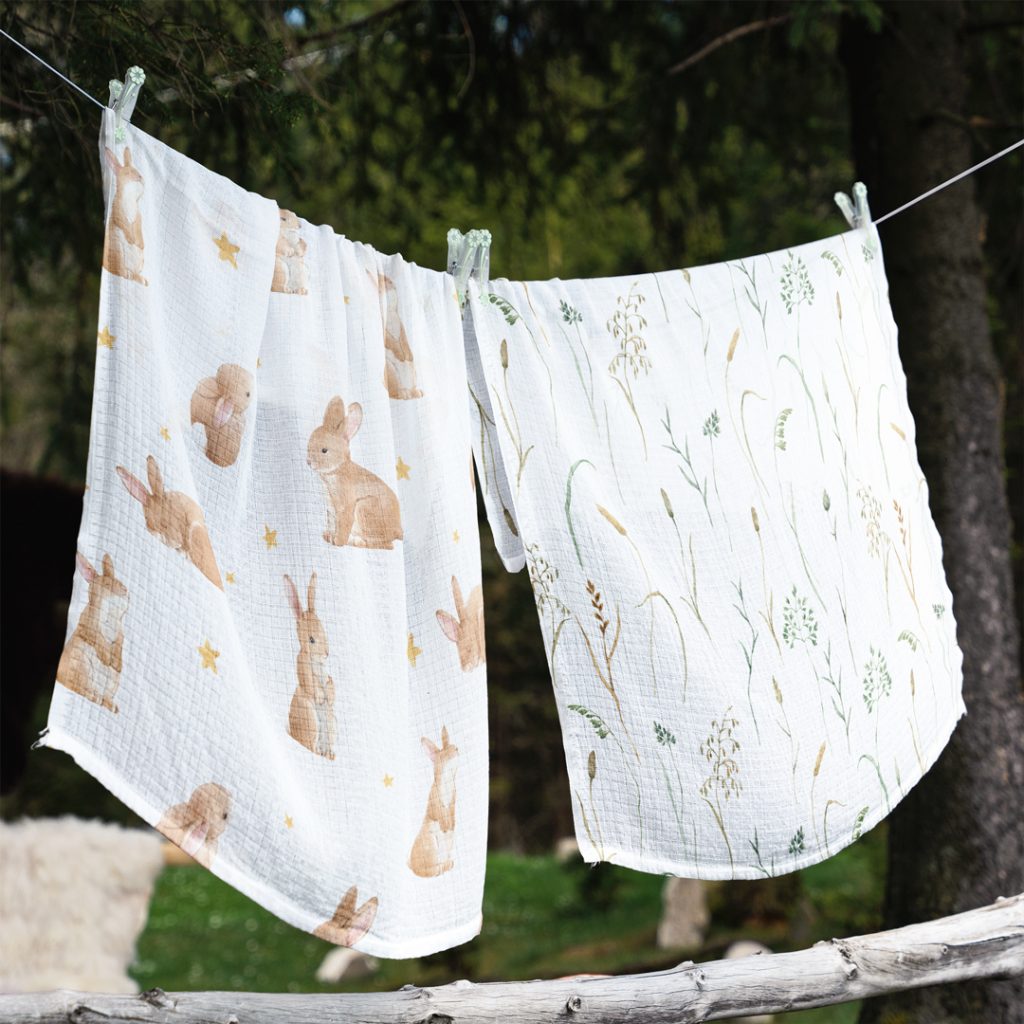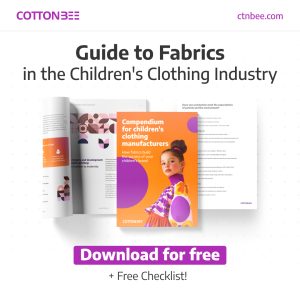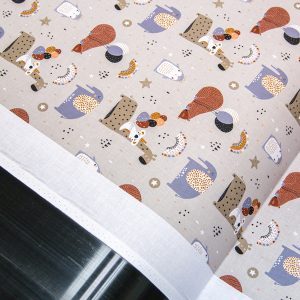Choosing the right fabric for a garment is a key step that affects the comfort, appearance and durability of the garment. In this guide, we will introduce you to the different types of fabrics and knits that can be used in tailoring. You will learn how the different types of clothing fabrics differ and what their properties are. This will make it easier for you to decide which fabrics will work best for your projects.
Table of Content
- Woven versus knitted fabric – the main difference
- Types of weave
- Woven weaves
- Knit weaves
- The most popular fabrics – which ones to choose for garments?
- Cotton
- Silk
- Wool
- Viscose
- Lyocell
- Polyester
- Polyamide
- Linen
- What else to look for when choosing fabrics for clothing?
- The best types of fabric for clothing – what to choose? Summary
Woven versus knitted fabric – the main difference
The differences between woven and knitted fabrics go deeper than just the way the threads are braided. Woven and knitted fabrics have their own unique characteristics that affect their use and properties.
Woven fabric consists of warp threads and weft threads that are crossed at right angles to form a regular, strong weave. This is a more formal manufacturing process that generates fabrics with a consistent structure and strength. Fabrics can be made from different types of fibres, such as natural (e.g. cotton, linen, silk) or artificial (e.g. viscose, polyester), which affects their properties such as softness, air permeability or durability. Fabrics are used in a variety of clothing areas, from formal underwear to elegant suits.
On the other hand, knitwear is produced by braiding the threads into loops, which gives it more elasticity and softness. This process of creating the fabric is more casual and informal, making knitwear typically more flexible and comfortable to wear. Knitted fabrics are often used in sportswear, casual wear and anywhere where comfort and freedom of movement are important. Examples of knitwear include tracksuits, jumpers, t-shirts or leggings.
Types of weave
Woven weaves
- Linen weave: Characterised by a simple, regular arrangement of threads. Examples of fabrics include flannel and chiffon, which are light, airy and soft.
- Satin weave: Creates a smooth, shiny surface, ideal for delicate fabrics such as satin, used for blouses and dresses.
- Twill weave: Distinguished by the diagonal arrangement of the threads, which gives the fabric durability and resistance to crushing. An example is denim, popular in everyday clothing.
Knit weaves
- Row weave: Also known as rib knit, used in cuffs, caps and sweatshirts, provides elasticity and fit.
- Column weave: Creates stable, openwork structures like tulle, ideal for light, airy skirts and decorative accents.

The most popular fabrics – which ones to choose for garments?
When choosing fabrics for garments, it is important to look at the type of fibre: natural (e.g. cotton, wool), artificial (e.g. viscose, lyocell) and synthetic (e.g. polyester, polyamide). Each of these materials has unique properties that affect their use.
Cotton is one of the most popular natural fibres, prized for its softness, breathability and hypoallergenicity. Its versatility makes it used in many types of clothing. Everyday clothing, underwear, t-shirts or children’s clothes made from cotton are not only comfortable, but also pleasant to the skin. Importantly, cotton can be used for a variety of seasons – from lightweight summer clothes to warmer winter creations. Depending on the weave, cotton can create both soft, airy fabrics and denser, warmer fabrics.
Silk is a luxurious fabric with exceptional softness and natural lustre. It is lightweight yet strong, making it ideal for elegant evening wear, blouses, dresses and scarves. Its thermoregulatory properties make it pleasant to wear in both summer and winter, making it a popular choice for different seasons. Silk also impresses with its durability, so it can be worn for a long time and please the eye with its luxurious appearance.
Wool
Wool is known for its excellent insulating properties, making it an indispensable material for winter clothing. Warm, breathable and crease-resistant, it is perfect for jumpers, coats, scarves and hats. At the same time, wool has natural moisture-wicking properties, ensuring that it is comfortable to wear even during intense active pursuits. Its versatility means that it can be used in both casual and sportswear.
Viscose is an artificial fibre that combines the characteristics of natural and synthetic materials. It is soft, smooth and airy, making it ideal for dresses, blouses and lightweight trousers. Its skin-friendliness and good layering properties make viscose a prized choice for clothing for a variety of occasions. It is the ideal choice for airy summer creations that provide comfort even on hot days.
Lyocell
Lyocell, also known as Tencel, is an eco-friendly man-made fibre with excellent breathability properties. It is soft, durable and skin-friendly, making it ideal for sportswear, underwear and everyday wear. Its ability to wick away moisture efficiently makes it comfortable even during intense training. Additionally, Lyocell is produced in an environmentally friendly way, making it a popular choice for those looking for eco-friendly solutions.
Polyester is a versatile synthetic material, prized for its durability, crease resistance and ease of care. It is lightweight, quick-drying and easy to clean, making it often used in sportswear, jackets, trousers and workwear. Its performance properties make it a popular choice for physically active people and those who value practicality and functionality.
Polyamide
Polyamide, also known as nylon, is a durable synthetic material that is abrasion and crease resistant. It is lightweight, flexible and quick-drying, making it ideal for sportswear, underwear and tights. Its flexibility and durability make it a popular choice for active people and those looking for garments that will hold their shape and appearance for a long time.
Linen
Linen is a natural fibre that is extremely breathable and absorbent. It is ideal for summer clothing such as dresses, shirts and trousers. Linen has a natural, rustic look and is prized for its durability and cooling properties. Its lightness and breathability make it a popular choice for those looking for warm-weather clothing that will keep them comfortable even in the hottest weather.

What else to look for when choosing fabrics for clothing?
When choosing fabrics for garments, it is important to pay attention to several key aspects that can significantly affect the final product. Here are some additional factors to consider:
- Colours and combinations: The colour scheme of fabrics is one of the most important aspects that can determine the appeal of a garment. It is important to plan the colour palette carefully before production and to check how the different colours will blend together. The durability of the colours should also be taken into account – some dyes can fade after several washes, which can affect the appearance of the garment.
- Fabric texture: The texture of the fabric can significantly affect the aesthetics and functionality of the garment. Consider whether you prefer a matte, subtle finish or a shiny, more striking finish. The texture of the fabric should be tailored to the type of garment – for example, matte fabrics may be more suitable for casual wear, while shiny fabrics may work better for elegant evening wear.
- Air permeability: The comfort of a garment, especially a summer garment, largely depends on the air permeability of the fabric. Materials that breathe well provide better ventilation and thermal comfort. Natural fibres such as cotton, linen or silk usually have better breathability than synthetics.
- Ease of care: Fabrics that are easy to clean are more practical and comfortable for users. It is important to choose fabrics that are machine-washable and do not require special care, such as gentle hand washing or special cleaning products. Crease-resistant and quick-drying materials are an added advantage, especially for everyday and sportswear.
- Durability and strength: The durability of the fabric is a key factor, especially if the garment is to be worn frequently and intensively. Fabrics should be resistant to abrasion, creasing and stretching. Also check that the fabric is resistant to fading and wrinkling, which can affect its appearance after prolonged use.
- Eco-friendliness and ethical origin: More and more consumers are paying attention to the eco-friendliness and ethical origin of fabrics. When choosing fabrics for clothing, consider organically grown fabrics such as organic cotton or recycled fabrics. In addition, make sure the fabrics are ethically produced with respect for workers’ rights and minimal impact on the environment.
- Use and purpose: Ultimately, the choice of fabric should be tailored to the specific type of garment you plan to produce. Fabrics used for sportswear should be flexible and breathable, while fabrics for formalwear should be elegant and well-fitting. Think carefully about what properties are most important for a particular type of garment and choose the fabric that best meets these requirements.
The best types of fabric for clothing – what to choose? Summary
Choosing the best fabric for clothing depends on the type of garments you plan to produce and your specific requirements for appearance, comfort and functionality. Whether you are looking for fabric for elegant dresses, comfortable casual wear or sportswear, it is crucial to find the right supplier who offers high-quality materials. Feel free to contact us to find out more about the options available and choose the best fabrics for your projects.





